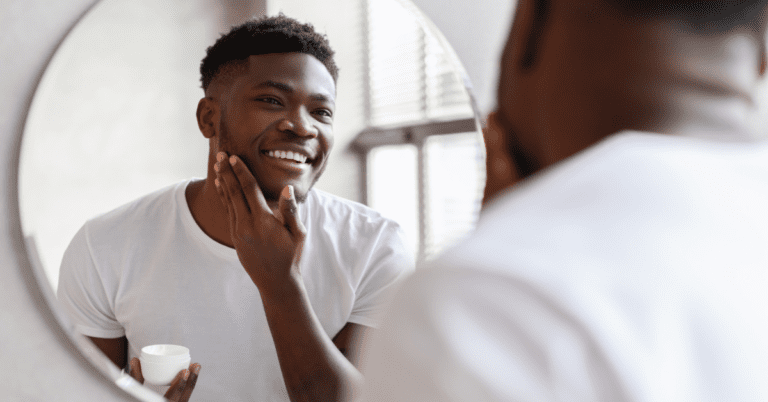Living with vitiligo, a condition characterized by the loss of skin pigment resulting in white patches, can bring about a range of emotions. While the exact cause of vitiligo remains an area of ongoing research, a growing body of evidence suggests a significant link between stress and the progression of this condition. Understanding this connection can empower our community to better manage their well-being.
The Body's Response to Stress
When we experience stress, our bodies initiate a complex “fight-or-flight” response. This involves the release of various hormones and neurotransmitters, including cortisol and norepinephrine. While this response is crucial for dealing with immediate threats, chronic or prolonged stress can have far-reaching effects on our immune system and overall health.
The Immune System and Vitiligo
Vitiligo is considered an autoimmune condition, meaning the body’s immune system mistakenly attacks its own healthy cells – in this case, the melanocytes, which are responsible for producing melanin, the pigment that gives our skin its color. Studies have shown that psychological stress can disrupt immune regulation and potentially trigger or worsen autoimmune conditions.1,2
Stress as a Potential Trigger or Aggravator
Several studies have explored the association between stressful life events and the onset or worsening of vitiligo. For instance, a study published in the International Journal of Dermatology found a significant percentage of people living with vitiligo reporting a stressful event prior to the appearance of their first vitiligo patches.3 Similarly, other research suggests that periods of high stress can coincide with the rapid spread of existing vitiligo.4
While stress may not be the sole cause of vitiligo, it appears to be a significant contributing factor for many individuals. The exact mechanisms are still being investigated, but it’s thought that stress-induced hormonal changes and immune dysregulation may play a crucial role in the destruction of melanocytes.
Managing Stress for Our Well-being
Given the potential link between stress and vitiligo, incorporating stress management techniques into our daily lives can be beneficial for our overall well-being. This might include:
- Mindfulness and Meditation: Practices like deep breathing exercises and meditation can help calm the nervous system and reduce stress hormones.
- Regular Exercise: Physical activity is a fantastic stress reliever and can also boost mood and improve overall health.
- Adequate Sleep: Getting enough quality sleep is essential for both physical and mental restoration.
- Healthy Diet: Nourishing our bodies with a balanced diet can enhance our resilience to stress.
- Strong Social Support: Connecting with friends, family, or support groups can provide emotional comfort and reduce feelings of isolation.
- Professional Help: If stress feels overwhelming, seeking guidance from a therapist or counselor can provide valuable coping strategies.
Moving Forward Together
Understanding the connection between stress and vitiligo is an important step in empowering our community. By acknowledging this link and prioritizing stress management, we can take proactive steps towards our overall health and well-being. Remember, you are not alone in this journey, and support is available within our community and beyond.
References
- Dhabhar F. S. (2009). Enhancing versus suppressive effects of stress on immune function: implications for immunoprotection and immunopathology. Neuroimmunomodulation, 16(5), 300–317. https://doi.org/10.1159/000216188
- Henning, S. W., Jaishankar, D., Barse, L. W., Dellacecca, E. R., Lancki, N., Webb, K., Janusek, L., Mathews, H. L., Price, R. N., Jr, & Le Poole, I. C. (2020). The relationship between stress and vitiligo: Evaluating perceived stress and electronic medical record data. PloS one, 15(1), e0227909. https://doi.org/10.1371/journal.pone.0227909
- Papadopoulos, L., Bor, R., Legg, C., & Hawk, J. L. (1998). Impact of life events on the onset of vitiligo in adults: preliminary evidence for a psychological dimension in aetiology. Clinical and experimental dermatology, 23(6), 243–248. https://doi.org/10.1046/j.1365-2230.1998.00384.x
- Pahwa, P., Mehta, M., Khaitan, B. K., Sharma, V. K., & Ramam, M. (2013). The psychosocial impact of vitiligo in Indian patients. Indian journal of dermatology, venereology and leprology, 79(5), 679–685. https://doi.org/10.4103/0378-6323.116737
You Might Also Like:

5 Skin Conditions Men Are More Susceptible To
In this article, we’ll break down five skin conditions men are more susceptible to, explain the science behind them, and share what can be done to prevent or manage them effectively.

How Sound Healing Therapy Can Help with PTSD
In honor of PTSD Awareness Month and Black Music Appreciation Month, learn about how the power of sound can offer a gentle source of comfort and healing for those living with the condition.









